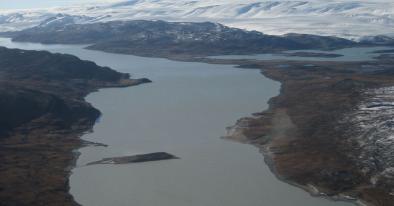Science Source
Greenland Blocking Index 1851-2015: a regional climate change signal
- Presents an extended monthly and seasonal Greenland Blocking Index (GBI) from January 1851- December 2015, which more than doubles the length of the existing published GBI series
- Finds there are significant decreases for the whole time period in GBI in autumn, October and November, and no significant monthly, seasonal or annual increases
- Finds there are significant GBI increases since 1981 in all seasons and annually, with the strongest monthly increases in July and August
- Finds evidence of a recent clustering of high GBI values in summer, when seven out of the top eleven values in the last 165 years – including the two latest years 2014 and 2015 - occurred since 2007
- Finds there have been significant increases in GBI variability since 1851 in May and especially December—December has also shown a significant clustering of extreme high and low GBI values since 2001, mirroring a similar, recently identified phenomenon in the December North Atlantic Oscillation index, suggesting a related driving mechanism
- Discusses changes in hemispheric circulation that are associated with high compared with low GBI conditions
Related Content
Science Source
| Geophysical Research Letters
Melting glaciers stimulate large summer phytoplankton blooms in southwest Greenland waters
Kevin R. Arrigo, Gert L. van Dijken, Renato M. Castelao et al
Science Source
| Geophysical Research Letters
Ice Core Records of West Greenland Melt and Climate Forcing
K. A. Graeter, E. C. Osterberg, D. G. Ferris et al
Science Source
| Science Advances
Abrupt shift in the observed runoff from the southwestern Greenland ice sheet
Andreas P. Ahlstrøm, Dorthe Petersen, Peter L. Langen et al
Headline

Dec 15, 2017 | Vox
Greenland's ice sheet is driving global sea level rise. One section is melting 80% faster.


